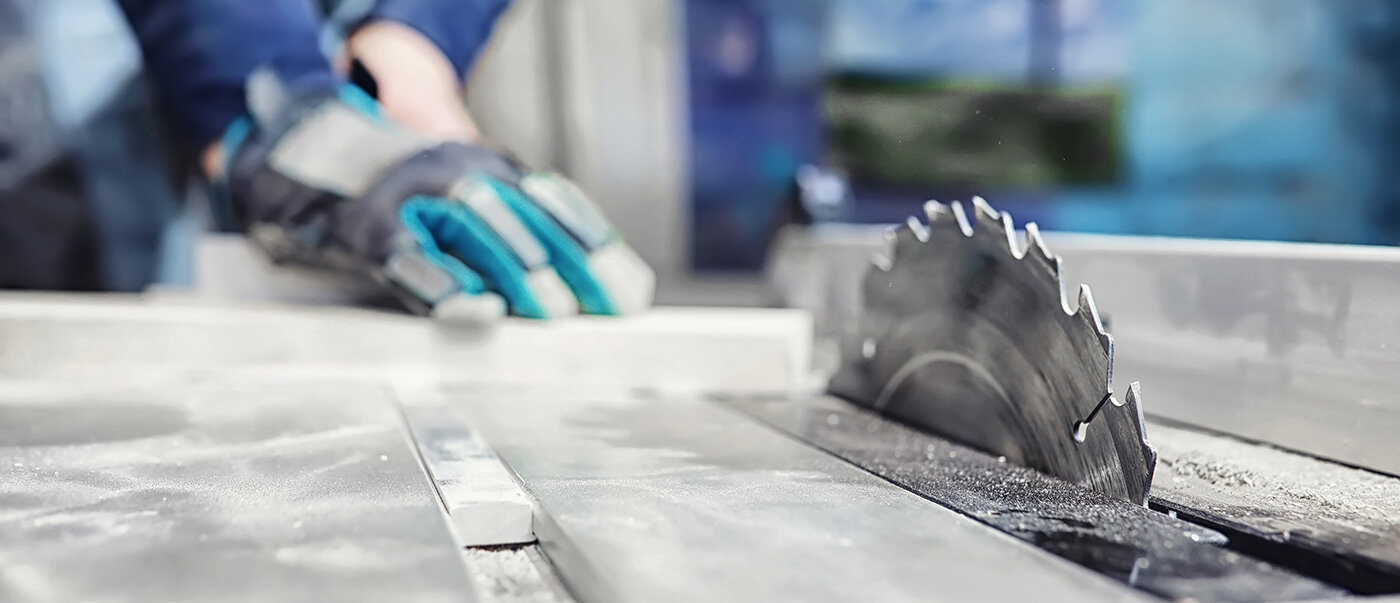
Toolbox Talk: Table Saw Safety
Part 2
Table saw safety is extremely important to craftsmen and woodworkers because most people who use power tools use table saws frequently. Add to that the power of the saw and the dangers it presents, and we quickly understand that lots of personal damage is possible.
The table saw has been in use for many, many years, so most potential problems can be easily foreseen and avoided. The tips below should help you avoid most, if not all problems:
Make sure that the blade has stopped turning before you adjust the table saw. Making adjustments can get hands too close to the blade and even a slowly spinning blade has a multitude of sharp edges that can do damage.
Always make sure that the blade is turning free before you turn on the power. This is especially helpful after you make changes or adjustments. Keep the tabletop smooth and polished. A dirty or rough table requires you to use more force to push the stock through the blade. It may also rust, further reducing the saw’s effectiveness.
Keep the rip fence parallel to the blade so the stock doesn’t bind on the blade and kickback. Some woodworkers prefer to keep the rear of the fence kicked out (away from the blade) by 1/64”. Both work.
Never operate a table saw with the throat insert removed. Wood that is fed into a gaping hole can drop down and get caught on the blade. That can’t happen if the throat insert is in place.
Do not make free-hand cuts on a table saw. Guide the stock using the rip fence or the miter gauge.
Keep the blade guards, splitters, and anti-kickback fingers in place and operating freely. Check the action of these items before starting work.
Work should be released only when it is past the blade. Releasing work too early is an invitation to kickback as the blade can grab the part that has not yet gone by.
Whenever the stock is lifted or tilted above the surface of the table, the saw can shake the stock. If this happens, and you lose your grip, duck down and hit the stop button because losing your grip on the work means it will probably come back at you.
Check stock before cutting. Look for nails, knots, screws, or stones. Such items may become projectiles. If they hit, they smart and may cause serious injury as well. Also, damage to carbide-tipped blades can be major, even if all it does is scare you.
The fence and the miter gauge are not meant to be used together. Under some circumstances, you can use both (see above on stop blocks), but the fence then needs an auxiliary fence added. That fence or stop must end just before the saw blade.
Don’t fiddle with the fence adjustment when the saw is running. And a general addition, which goes for all tools and all techniques in a wood shop, if a procedure feels unsafe, it probably is, so don’t use it. Find another way to do what has to be done.

